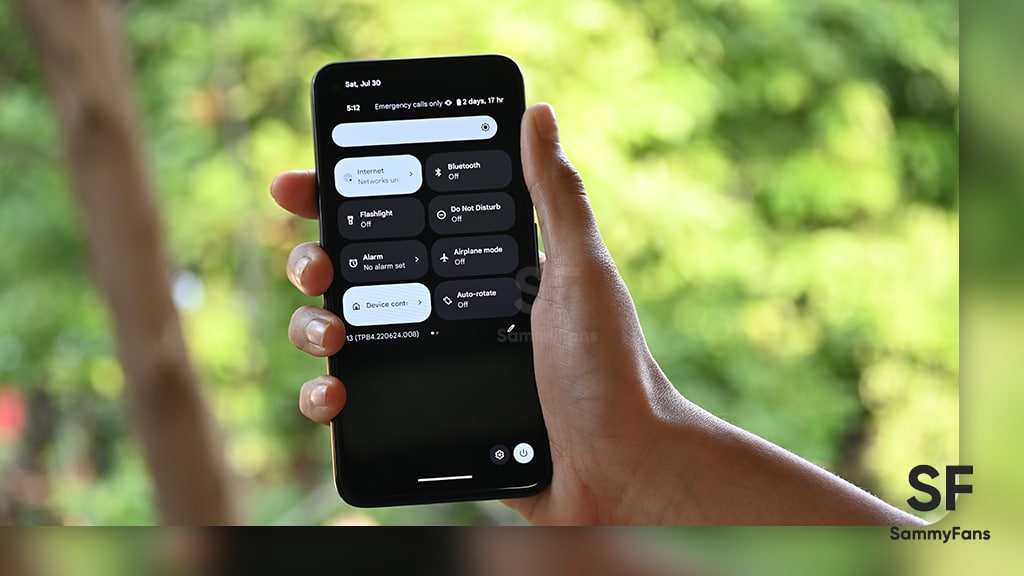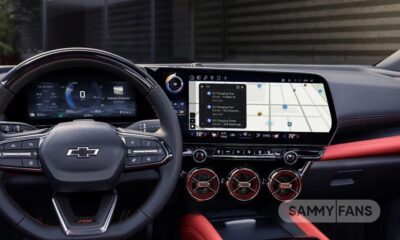Android
Google launched Android 12L for foldables, tablets

Recently, Google has announced a new version of Android, Android 12L, which aims to create the building out of Android 12 on larger-screened devices (via Google Developers). It is mainly intended for tablets and foldables, but Chromebook users will also benefit from it.
Google has historically struggled to encrypt Android’s large screen since its release and later reversed the changes it made with Android Honeycomb. Although the company has since shipped Android tablets such as the Nexus 10 and Pixel C, the information of these has been widely criticized for being a tapped phone interface, a charge that has plagued Android tablets.
What’s in Android 12L?
- Powerful and intuitive multitasking
- More updates and resources for large screens
Try your apps on 12L and optimize for the next wave of large-screen devices!
Get Started with Android 12L UI

Read more: One UI 4.1 Eligible Devices: Next Samsung Android 12 update after One UI 4.0
Android 12L UI
Android 12L fixes all that by bringing more enhanced features to take advantage of the larger display like Samsung’s latest Galaxy Z series. Instead of a large, widely space notification center, Google will add a new dual-panel notification center to folders and tablets. This allows users to see and share their notifications and instant settings instantly.
Changes to Google Play on large screens
In Android 12L, new production features make multitasking more dynamic and more precise. The Android 12L adds a new taskbar that makes it easy to launch and change apps quickly.
Gestures make use of the taskbar even faster, by dragging and dropping to get into screen split mode and swipe up to go home. In gesture navigation, a quick switch allows users to browse the latest apps.

Android 12L Compatibility
There is a new taskbar, reminiscent of a dock or shelf you will find on normal laptops and the Samsung’s new One UI Book that will allow for quick application changes. The split-screen will see an improvement, as Google plans to add an advanced drag and drop function. It’s not as big a change as it was with Android 12, but it will make using Android on larger screens a better experience and provide a solid foundation for tablet makers to work with.
Availability
Android 12L goes to test from now for developers on selected devices such as the Lenovo P12 Pro tablet. The more widespread beta will be made available on Google Pixel phones and soon for other compatible devices.
Aside from SammyFans’ official Twitter and Facebook page, you can also join our Telegram channel and subscribe to our YouTube channel to get notified of every latest development in Samsung and One UI ecosystem. Also, you can follow us on Google News for regular updates.
Android
Google unveils Android 16 Developer Preview with exciting features

Google has kicked off the Developer Preview for Android 16, arriving earlier than expected. Usually, these previews begin in February, but Android 16 DP1 is launching three months ahead of schedule this year.
The earlier release of the DP1 is because Google has moved the official Android 16 release from the third quarter to the second quarter of 2025. It aims to ensure that more devices get access to the major Android updates sooner.
Android 16 DP1 is available for several Pixel devices, including the pixel 6, Pixel 6 Pro, Pixel 6a, Pixel 7, Pixel 7 Pro, Pixel 7a, Pixel Tablet, Pixel Fold, Pixel 8, Pixel 8 Pro, Pixel 8a, Pixel 9, Pixel 9 Pro, Pixel 9 Pro XL, and Pixel Pro Fold, as well as the Android Emulator. It can be identified through version BP21.241018.009.
![]()
The Android 16 Developer Preview brings new features for app developers. It brings a system photo picker that will help apps give users a smoother, more integrated way to select photos without needing extra permissions.
Another new feature is Health Connect, which lets apps access and manage medical records in FHIR format, but only with user permission. The update also includes the latest version of the Privacy Sandbox for privacy protection.
This preview program runs from November 2024 until the final public release next year. Android 16 Beta Program will begin in January, with the final stable release expected in Q2 of 2025. Stay tuned for more updates.
Android 16 to make Quick Settings access easier with one-finger swipe
Android
Google’s Android 15 QPR2 Beta 1 update is now available

Google has released the first beta of Android 15 QPR2 for Pixel users. The update can be identified via build version BP11.241025.006. However, users are also waiting for the stable release of Android 15 QPR1 in December this year.
Android 15 QPR2 Beta 1 update comes with the November 2024 security patch. It is available for a wide range of Pixel devices, including Pixel 6, Pixel 6 Pro, Pixel 6a, Pixel 7, Pixel 7 Pro, Pixel 7a, Pixel Tablet, Pixel Fold, Pixel 8, Pixel 8 Pro, Pixel 8a, Pixel 9, Pixel 9 Pro, Pixel 9 Pro XL, and Pixel 9 Pro Fold, as well as the Android Emulator.
Quarterly Platform Releases are updates that bring more noticeable changes and new features compared to the usual monthly bug fixes. These updates are perfect for testing out bigger UI changes or new features that don’t need to wait for a full Android version release.
![]()
The QPR2 Beta 1 is the second major update for Android 15, with the final version expected to launch in March 2025 (via 9to5Google). This update brings the usual bug fixes, security enhancements, and new features to test.
Users participating in the beta program are advised to report any issues via the Android Beta Feedback app, easily accessible through the app drawer or Quick Settings. Install the update now to get an enhanced experience.
Android 16 to make Quick Settings access easier with one-finger swipe
Android
Android 16 to make Quick Settings access easier with one-finger swipe

Google is reportedly going to bring an interesting change with Android 16, which will no longer require two fingers to pull down the Quick Settings panel. Previously, there were concerns that users would need to swipe down with two fingers to bring up the Quick Settings. Fortunately, Google has decided to simplify this process.
With Android 16, accessing the Quick Settings will only require a single-finger swipe down on the right half of the status bar. The one-finger swipe access aligns it more closely similar to other Android manufacturers, like OnePlus and Samsung, have designed their systems.
Several users didn’t like the idea of needing two fingers to swipe down, as it felt more awkward and less convenient. By switching to a single-finger swipe for Android 16, Google will make it easier for users to manage their settings with less effort. A well-known tipster Mishaal Rahman (via Android Authority) spotted the code for this Quick Settings change.

However, the new design still lacks the ability to swipe seamlessly between the notifications and Quick Settings panels. Hopefully, Google will add this feature before the official release.
In addition to the swipe change, Android 16 will introduce resizable Quick Settings tiles and better categorization to help users find specific settings more easily.
However, these features are still being worked on and may not be fully ready in the current beta. They are expected to roll out in the final Android 16 release, which is expected in mid-2025.










